|
Displaying items by tag: washington d.c.
The 19th Smithsonian museum opened its doors on September 24, and since then, demand to experience the new museum has yet to subside. Even though the museum is trying to implement timed passes to help manage the crowds, passes are quickly selling out online. 103,000 people visited the history, culture and community exhibitions in its first ten days, even with the museum being conservative about giving out advance passes to visitors. People have been traveling from across over the country to have a chance to see all of the incredible African American memorabilia in one place.
Barely a month in office, D.C. Mayor Muriel Bowser (D) has shelved a plan to turn the former Franklin School downtown into a contemporary art museum and has begun seeking other companies interested in redeveloping the building.
Dani Levinas, a local art collector who was selected a year ago by then-Mayor Vincent C. Gray to turn the crumbling brick building into a home for contemporary art exhibitions, said that despite being told by economic development staff shortly after Bowser took office that the project was being reviewed, he was stunned by the decision.
On Tuesday, May 21, 2013, the National Endowment for the Arts (NEA) announced that 2,000 museums across the country will offer free admission to active duty military personnel and their families in honor of Memorial Day on May 27, 2013. The announcement was made at the Smithsonian American Art Museum in Washington, D.C.
Participating fine art museums include the Museum of Modern Art in New York, the Museum of Contemporary Art in Chicago, the Los Angeles County Museum of Art, and the J. Paul Getty Museum in Los Angeles. The NEA in cooperation with the Department of Defense and Blue Star Families organizes the annual initiative, which lasts through Labor Day weekend (September 2, 2013).
For more information visit www.arts.goc/bluestarmuseums.
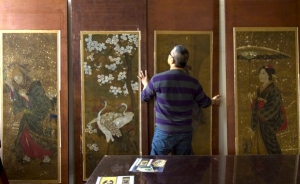
Six 140-year-old Japanese silk paintings by Utagawa Kunitsuru have undergone major restoration thanks to Washington, D.C.-based conservator, Yoshi Nishio. The paintings, which measure about 6 feet tall and 21 ½ feet wide, were previously hung in the Decatur House, a historic home and functioning museum, which serves as the National Center for White House History. The Decatur House is located across Lafayette Square from the White House and was designated a U.S. National Historic Landmark in 1976.
The paintings are believed to have been created in 1873 during a time of rich cultural exchange between Japan and the United States. The leading theory suggests that President Ulysses S. Grant acquired the works when he visited Japan in 1879 as part of a world tour. Only one of the six paintings is signed and dated.
The works have hung in the Decatur House for over a century and years of smoke, sunlight, and moisture had left the paintings wrinkled and darkened. Nishio, who received the paintings last year, spent hours cleaning the works with water, solvents, cotton swabs, and bamboo brushes with sable bristles. He worked on particularly delicate portions of the paintings with a scalpel under magnification. The paintings also had to be immersed in water to separate them from the boards they had been glued to.
The paintings, which feature a geisha, a robed samurai, white cranes, cherry blossoms, and a long-tailed rooster, are expected to return to the Decatur House in June 2013.
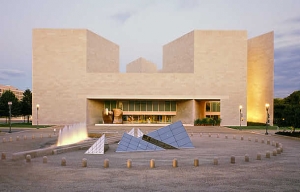
Officials at the National Gallery of Art in Washington, D.C. announced that the museum’s East Building will undergo a $30 million renovation, adding over 12,260-square-feet of exhibition space and a rooftop sculpture garden to the structure. Designed by famed architect I.M. Pei (b. 1917) and opened in 1978, the East Building houses the museum’s collection of modern paintings, drawings, sculptures, and prints as well as study and research centers and offices.
The East Building galleries will gradually close beginning in July and ending in December 2013; they will remain shuttered for approximately three years once renovations begin in January 2014. The project will create two sky-lit Tower Galleries within the East Building, which will be adjoined by an outdoor sculpture terrace. The East Building will continue to house the museum’s modern art collection and may see the addition of a room dedicated to the work of Mark Rothko (1903-1970). Museum officials hope that the additional exhibition space will inspire future donations to the National Gallery’s permanent collection.
The East Building project is part a Master Facilities Plan, which started in the museum’s West Building in 1999 and involved bolstering the building’s infrastructure and renovating its main floor and sculpture galleries. A number of established Washington-based philanthropists are donating $30 million for the East Building project; it is one of the largest gifts the museum has received from private donors in a decade.
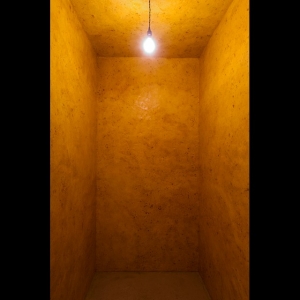
The Phillips Collection in Washington, D.C. will unveil its first permanent installation in over 50 years. Founded by the art collector and critic Duncan Phillips (1886-1966) in 1921, the Phillips Collection is the United States’ first modern art museum.
The new addition to the institution is a room made entirely from beeswax titled Wax Room. The experimental piece is the work of Wolfgang Laib (b. 1950), a conceptual German artist who is well known for his sculptural works made from natural materials. Laib has been making his beeswax chambers for over 25 years using hundreds of pounds of melted beeswax to coat walls and ceilings. The otherworldly spaces he creates are warmly lit by single hanging light bulbs.
The Phillips Collection’s other permanent installation is its Rothko Room, which holds four paintings by the abstract expressionist painter Mark Rothko (1903-1970). The intimate presentation of Rothko’s works was added as a permanent exhibit in 1960, six years before Duncan Phillips’ death. Phillips worked closely with Rothko, deciding which walls to hang each painting on and the kind of lighting and furniture that would best suit the room. The Phillips Collection was the first American museum to dedicate a space to Rothko’s work and it remains the only one designed in collaboration with the artist himself.
Laib’s progressive work is a welcomed addition to the Phillips Collection. While Phillips’ holdings consisted of many Impressionist paintings and other mainstream works, he also had a taste for the unconventional. Phillips was one of the earliest patrons of American modernists including John Marin (1870-1953) and Arthur Dove (1880-1946) and also harbored great admiration for Abstract Expressionism before it became a respected art movement.
Laib’s Wax Room will be unveiled on March 2, 2013.
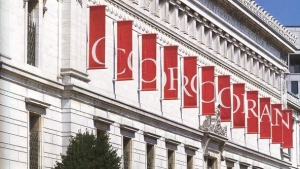
On June 5, 2013 the Corcoran Gallery of Art in Washington, D.C. will auction 25 rugs from its William A. Clark Collection at Sotheby’s New York. The rugs, which are from the 16th and 17th centuries, are estimated to bring as much as $9.6 million.
The rugs were part of a bequest from William Clark (1839-1925), a Montana-based billionaire entrepreneur-turned-senator, to the Corcoran in 1925. The gift was comprised of 200 paintings and drawings and a number of other works, including the rugs.
The Corcoran will use the proceeds from the sale to support future acquisitions that will better fit the institution’s focus on American and contemporary art. While the Corcoran has endured recent financial troubles, the money will not be used for operating expenses in keeping with its deaccession policy.
Highlights from the Corcoran sale include the Clark Sickle-Leaf Carpet, which is expected to garner between $5 million and $7 million. An unknown Persian artist created the rug during the first half of the 17th century possibly for the shah. The rarely exhibited Sickle-Leaf is one of the most iconic and important carpets to appear at auction. Another rug known as the Lafoes Carpet, which measures 44 feet long, is expected to bring between $800,000 and $1.2 million.
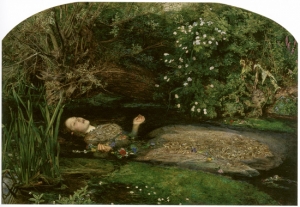
Now on view at the National Gallery of Art in Washington, D.C. is Pre-Raphaelites: Victorian Art and Design, 1848-1900, the first major survey of Pre-Raphaelite art to take place in the United States.
The Pre-Raphaelite Brotherhood, which formed in 1848, was a group of English painters, poets, and critics who rejected the traditional approaches to art and painting established by the Mannerist artists who succeeded Raphael (1483-1520) and Michelangelo (1473-1564). Instead, the Pre-Raphaelites turned to medieval and early Renaissance art for inspiration often painting subjects from Shakespeare and the Bible. Pre-Raphaelitism, which rattled Britain from 1848 to 1900, was considered the country’s first avant-garde movement.
The exhibition at the National Gallery features approximately 130 paintings, sculptures, works on paper, and decorative objects by the movement’s leading members including John Everett Millais (1829-1896), Dante Gabriel Rossetti (1828-1882), and William Holman Hunt (1827-1910). Organized by Tate Britain in collaboration with the National Gallery, Pre-Raphaelites: Victorian Art and Design will be on view through May 19, 2013.
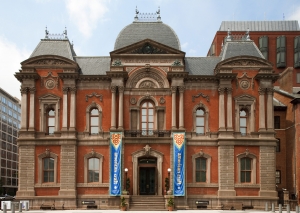
The Smithsonian Institution in Washington D.C. has announced that its Renwick Gallery, which houses the museum’s American craft and decorative arts collection from the 19th to 21st centuries, will undergo a major renovation. The Renwick Gallery, which opened to the public in 1972, will close to accommodate the project in early 2014 and is expected to reopen in 2016.
Project details are still being worked out and an exact cost for the renovations is yet to be determined. The Smithsonian is planning to use public funds to pay for half of the project and the rest will be paid through private partnerships. The project has already received a $335,000 grant from the National Park Service’s Save America’s Treasures initiative, as the Renwick Gallery is located in a National Historic Landmark building. The building’s construction began in 1859 and went on to house the city’s first art museum, the Corcoran Gallery of Art, upon its completion.
Museum officials plan to convert all of the Renwick Gallery’s lighting to energy efficient LED lights and wireless Internet access will be provided throughout the entire gallery. Heating, plumbing, electrical, air conditioning, and fire safety systems will all be gutted and replaced. This will be the Renwick Gallery’s first renovation in 40 years.
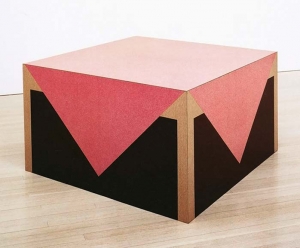
Genre-defying painter, sculptor, and illustrator, Richard Artschwager (1923-2013), died February 9, 2013 in Albany, NY. He was 89.
Artschwager, who was often linked to the Pop Art movement, Conceptual Art, and Minimalism, resisted classification through his clever genre mixing. His most well known sculpture, Table with Pink Tablecloth (1964) is an amalgamation of Pop Art and Minimalism and consists of a box finished in colored Formica, creating the illusion of a wooden table draped in a pink tablecloth. Artschwager often used household forms in his work including chairs, tables, and doors. In his paintings, Artschwager often painted black and white copies of found photographs and then outfitted them with outlandish frames made of painted wood, Formica or polished metal.
Artschwager was born in 1926 in Washington, D.C. and went on to study at Cornell University. In 1944, before he could finish his degree, he was drafted into the Army and sent to Europe. Upon returning to the United States after World War II, Artschwager completed his degree and decided to pursue a career in art. He moved to New York City and began taking classes at the Studio School of the painter Amédée Ozenfant, one of the founders of Purism. With a growing family and bills to pay, Artschwager took a break from making art to start a furniture-making business. After a fire destroyed his workshop, Artschwager returned to making art, developed his defining style, and was taken on by the Leo Castelli Gallery, which represented him for 30 years.
A few days prior to Artschwager’s death, the Whitney Museum of American Art in Manhattan closed a major career retrospective of his work. It was the second of its kind to be organized by the museum.
|
|
|
|
|